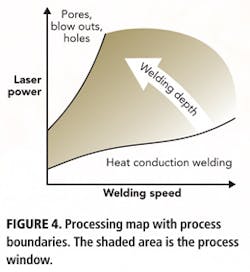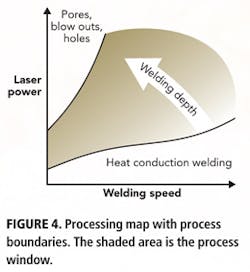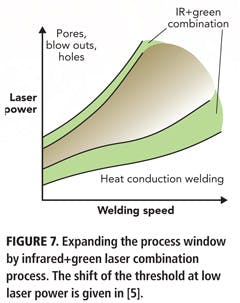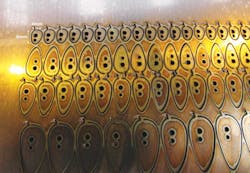Reducing time and cost to cut thinner materials
Peter Sanderson
Charles Day (Steels), a profile cutting company based in Sheffield, England, and founded in 1977, offers a flame cutting service. Over the years, the company has diversified its services to include a variety of profile cutting methods including: laser cutting, flame cutting, HD plasma cutting, and waterjet cutting.
In addition to the impressive portfolio of cutting and profiling services Charles Day has assembled, its sister company, The Laser Cutting Co. Ltd, also boasts an offering of four dedicated laser systems for cutting tubes, boxes, angles, and channels, two flatbed laser cutting systems, and minor fabrication capabilities.
In November 2012, Charles Day invested £1.5 million in a 6 kW BySpeed Pro, a 3 kW BySprint Fiber, and a ByCell Cross auto handling system, including sheet storage towers to feed both machines, all from Bystronic. Included in this latest investment is a fiber laser machine, bringing the total amount of laser cutting systems within the group to 12.
As with any large scale investment, there were initial teething problems, but the installation of the fiber laser has been an outstanding success. Through extensive testing and customer experience, Charles Day has found that the fiber laser excels when cutting material 4 mm and thinner. The results are cheaper and faster, and the quality is indistinguishable from CO2 lasers when cutting thin material (see examples in FIGURE 1.).
Cost reductions
The BySprint Fiber is a less expensive machine to run compared to the other laser machines the company operates. The 3 kW fiber machine not only uses less electricity to run than the other 3.5 kW to 6 kW CO2 machines, but also does not require laser gases to run, although some of these efficiencies have been counter-acted by increasing energy prices.
The costs of running the fiber have been helped by the automated handling system. For large jobs, the machine can cut sheet after sheet, unmanned, overnight. The main time gain of the fiber machine is loading of sheet and unloading of cut profiles so this automation is reducing costs for larger jobs.
Samuel Staniforth Ltd in Sheffield, a knife maker established in 1864, has for a number of years had knife blanks laser cut by Charles Day, which Samuel Staniforth's craftsmen then turn into high quality professional knives.
Chris Hopkinson, owner and director at Samuel Staniforth, is pleased with the new fiber laser machine: "We obtained a project that required a large amount of knife blanks cut around the 2 mm thickness. It was during the time Charles Day initially installed its fiber laser machine. When we were quoted, we received prices on both the traditional CO2 laser and on the new fiber laser. The fiber prices that came back were 30% to 40% cheaper than the CO2 prices. Even though knife blanks that are cut on the fiber laser are cheaper, there has been no discernible reduction in quality of the received parts."
Faster
Although the fiber laser is very fast, its overall speed is often slowed by complex shapes or large numbers of pieces. Even with this fact, it still performs better on thinner material than a traditional CO2 laser.
Charles Day is getting a lot of use out of the new machine. "The BySprint Fiber cuts exceptionally quick when cutting thinner materials. Combined with the tower system and its 24/7 operation, it is getting through a lot of sheet," said production manager Dave Sears.
Quality
In the company's tests, the quality of material 4 mm and below cut on the BySprint Fiber has been indistinguishable from its CO2 laser machines. Over 4 mm, for most materials, better quality has been achieved on traditional CO2 lasers or on waterjet cutting depending on customer requirements.
Sutcliffe Play in Pontefract is an award winning, employee-owned manufacturer that designs and makes children's outdoor playground equipment for a variety of buyers worldwide. The company initially contacted Charles Day after its existing supplier shutdown. Through recommendations, pricing, and capability, Sutcliffe Play chose Charles Day to fulfill its laser cutting requirements (FIGURES 2a and 2b).
"Ever since we started using Charles Day, we've been very happy with the quality coming from them," said Melanie Everit-Hughes, logistics supervisor at Sutcliffe Play. "Our products vary in thickness, but the thinner material that is cut on the fiber laser is a high standard. There have been no quality issues with the items we have received with no burrs on the edges of the cut and items easily within set tolerances."
Yellow metals
One of the goals of the investment in the BySprint Fiber was to be able to cut yellow metals such as copper and brass. Charles Day has traditionally cut these highly reflective and thermally conductive metals on its waterjet bed. The company has gained a lot of new work cutting yellow materials because it is now more economical.
The limits of the machine have been fully pushed by customer requirements including cutting of 1 mm copper with parts as small as 4 mm × 6 mm.
"Back in October, Charles Day fiber laser cut some 1 mm thick copper for a project of mine. I was warned that the pieces were at the very limit of what was possible as they were very small and very thin," said Oliver Horsman of Olice Productions (FIGURE 3), located in Bristol. "I expected the worst, but I was surprised when I received my order because the pieces came out great. I don't have many requirements for laser cutting, but the fiber laser cutting of the copper helped me fulfill my design at a reasonable price."
Summary
"The initial plan for the fiber laser machine was to help with our big running jobs and to aid in the profile cutting of yellow metals such as brass and copper," said Phil Wooffinden, managing director of Charles Day. "The fiber laser has surpassed our expectations, reducing the time and cost needed to cut materials on the thinner end of the spectrum. The fiber laser has fitted in well with our existing set up of 5 CO2 laser machines for thicker material and waterjet cutting machines for thicker yellow metal profile cutting."
The fiber laser has been a good complement to Charles Day's existing profile cutting capabilities, providing a fast and cheap method to cut vast volumes of thin material. The fiber laser cuts faster at thicknesses at 4 mm and thinner, but the advantages decrease when cutting more complex shapes or profiles with many pierces.
Manufacturers cutting thin material into simple shapes such as cabinets or control panels might consider buying a fiber laser. Profile cutting organizations that cut a lot of material 4 mm or below should definitely consider a fiber laser as their next investment as it might fill a gap in their existing line-up of laser machines.
Peter Sanderson ([email protected]) is the marketing manager with Charles Day (Steels), Sheffield, UK.
Past ILS Articles



